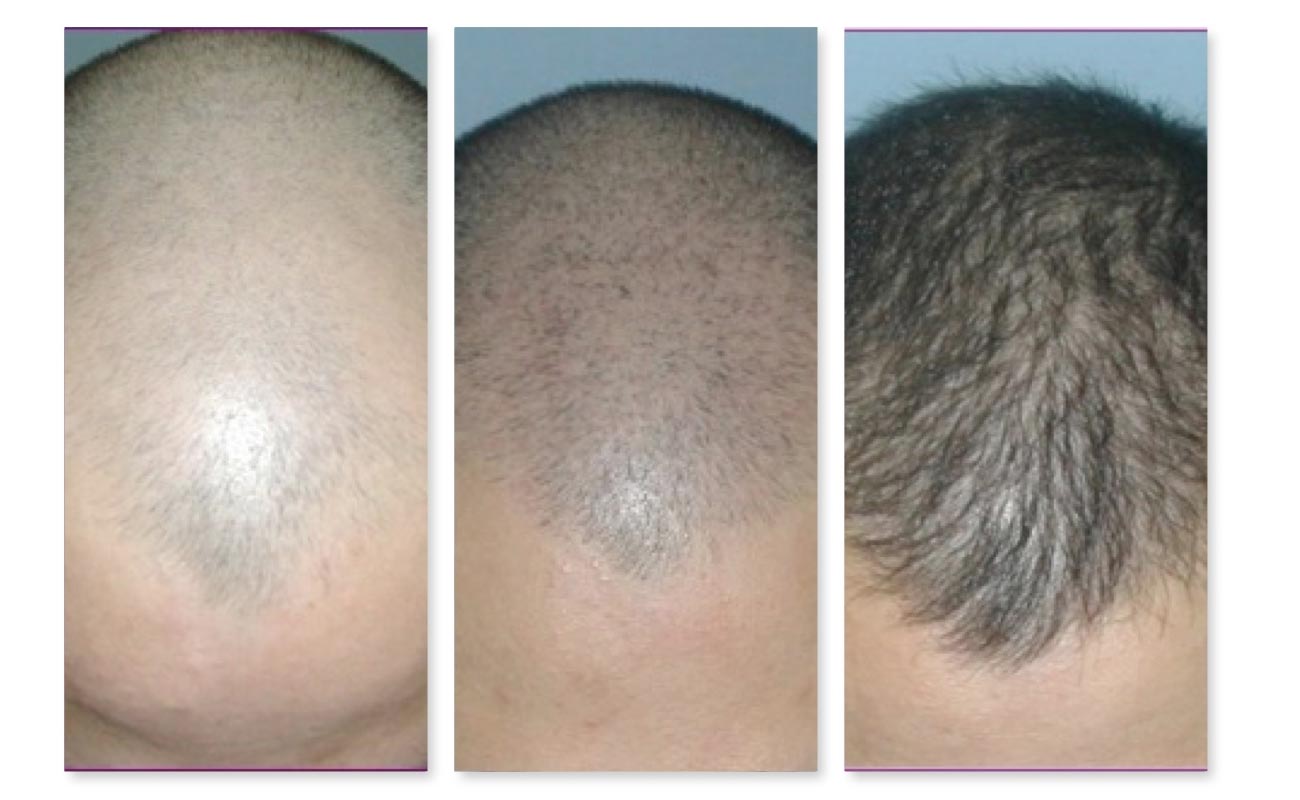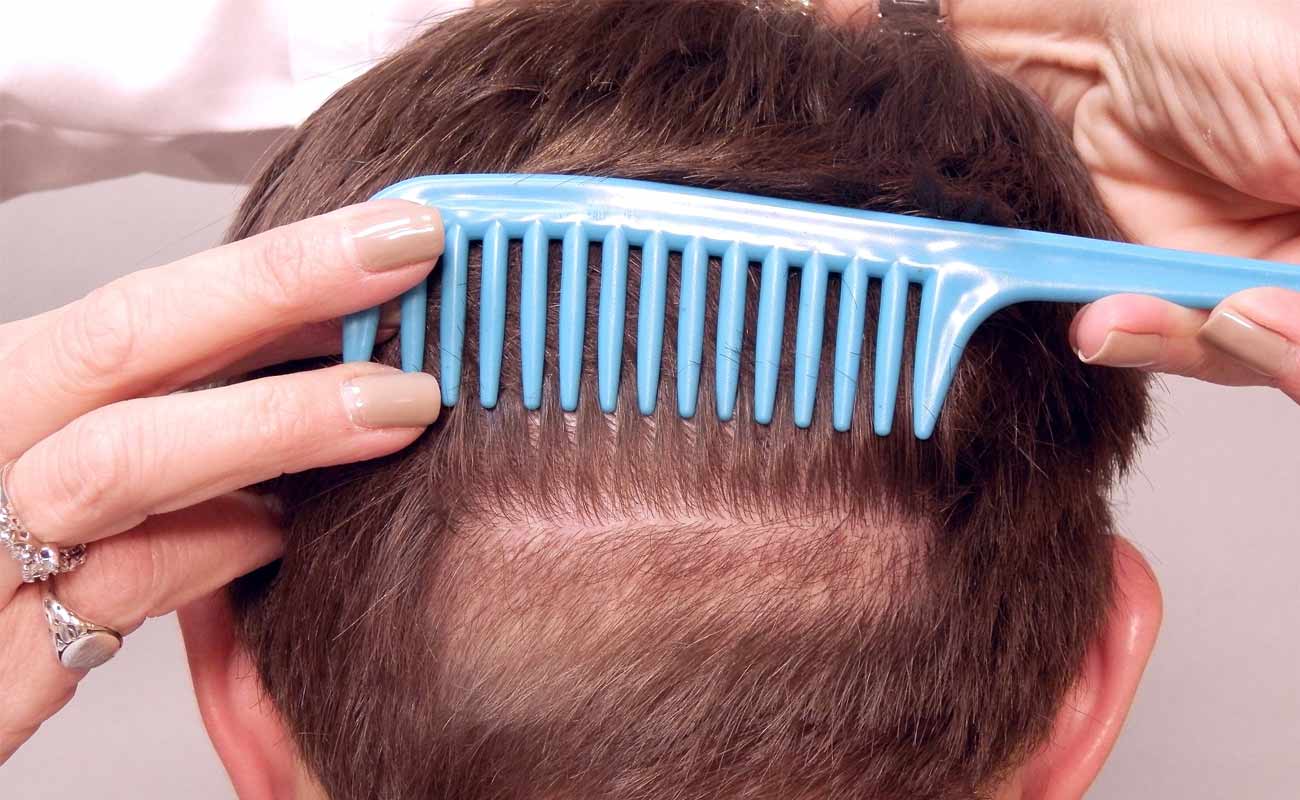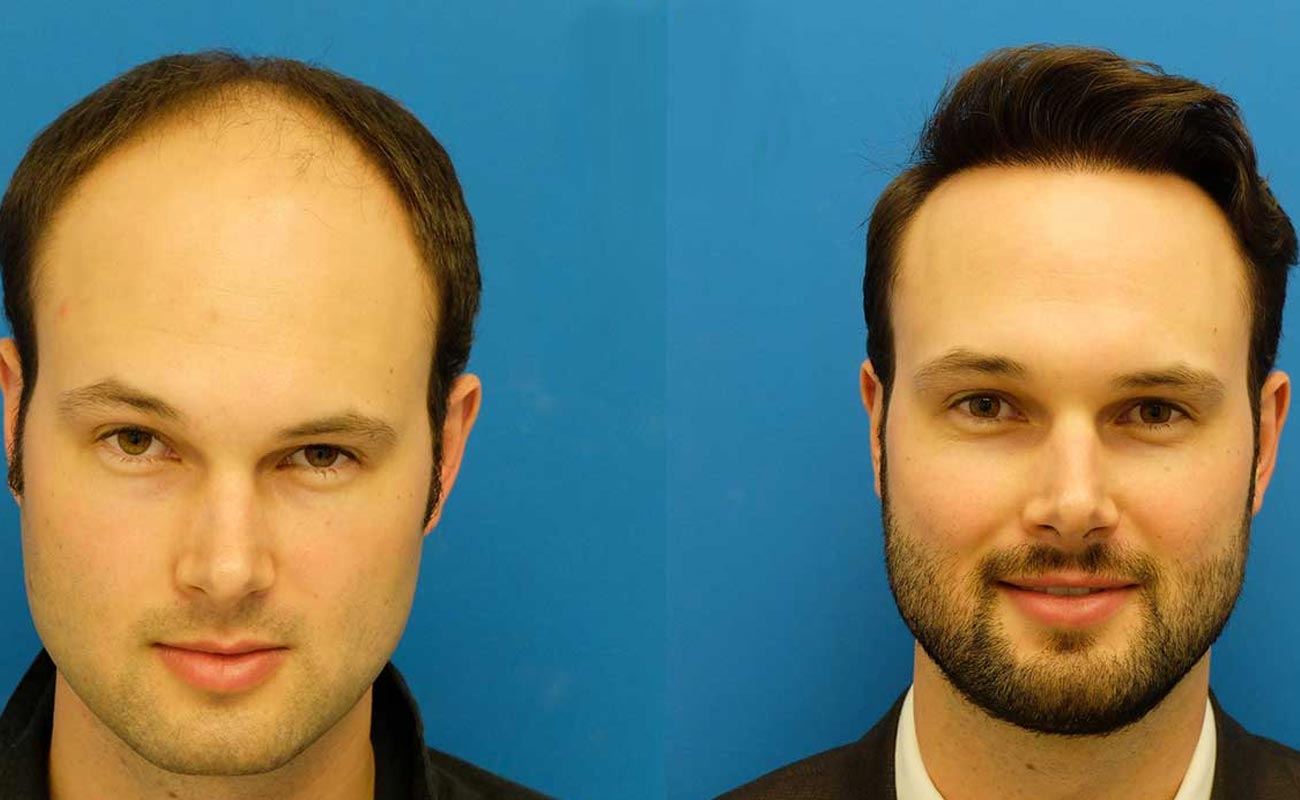Follicular Unit Transplantation (FUT) is a surgical procedure where hair is transplanted from the permanent zone, the area in the back and sides of the scalp where hair is more resistant to balding, to the bald or balding areas of the scalp. This is accomplished using naturally-occurring groups of 1, 2, 3, or 4 hairs, called follicular units. After the patient’s scalp is anesthetized, the doctor removes a strip of tissue from the donor area, an area within the permanent zone, and, once extracted, the donor strip is cut into many individual follicular units using microscopic dissection techniques. As these follicular unit grafts are being prepared, the doctor makes tiny holes in the scalp, called recipient sites, where the grafts are placed.

The arrangement and positioning of these follicular unit grafts determines the aesthetic qualities of a hair transplant, and so this arrangement must be decided on a case-by-case basis, depending on the patients’ history of hair loss and likelihood of future hair loss. Since follicular unit transplants mimic the way hair grows in nature, the results, in expert hands, will look completely natural and be indistinguishable from one’s original hair.
Follicular Units
For years it was thought that scalp hair grew as individual strands, but scalp hair actually grows in tiny little groups of 1-4 hairs each. These groups are called “follicular units.” Surprisingly, even after doctors learned about the existence of these groups, they didn’t think to use them in a hair transplant.
The advantages of this advanced FUT technique are fourfold:
1. Less damage to any existing hair in the recipient area.
2. Less post-operative redness.
3. Micrografts grow slightly faster than traditional types of grafts.
4. Micrografts produce no clumping or plugginess.

The FUT harvesting method creates a nice “chubby” graft, with lots of healthy tissue around it to sustain it during the transplant process. Because each graft is carefully sectioned by hand under the magnification of a microscope, the graft can be observed to ensure it is not transected and the supporting tissues are fully intact. These factors combine to increase the survival rate of grafts transplanted utilizing the FUT harvesting method
Hairs on the sides and the back of the head are not affected by male pattern baldness. As a result a hair transplant surgeon can remove donor hair follicles from the sides and back and relocate them on the top of the scalp where hair loss has occurred and the newly transplanted hair will grow exactly as it had from the donor region.
Before beginning a hair transplant your physician will review several important concerns:
These are some of the most important issues in deciding whether someone is a suitable candidate for hair transplantation.
The first step in the hair transplant process is the design of the hairline. The surgeon will sketch a suggestion for placement of the hairline. You are encouraged to participate in this decision process.
Next the donor area is prepared. Hair in the back is lifted and a narrow strip of hair is trimmed. The hair from above will cover the area. Both the top and the back of the scalp is then anesthetized. Patients are given the option for Nitrous Oxide (laughing gas) while the local anesthesia is applied. This is usually the only discomfort you will feel during the procedure, and lasts only one or two minutes.

Narrow strips are removed from the donor area and the hair from above and below are brought back together with a simple running stitch. The stitches are covered by your hair and removed in one week to ten days, leaving a fine scar line that is concealed by your own hair. (It is important to note that if you shave your hair in the donor area the scar line may show.)
An alternative procedure for acquiring donor hair is Follicular Unit Extraction or FUE. Follicular Unit Extraction (FUE) also takes grafts from the back and sides of the patient’s head individually. Depending on how the patient prefers it, you can either shave the whole head or small “micro-strips” can be shaved for optimal camouflage – but some level of shaving has to be done because the hair has to be short for effective removal.
From the donor strip naturally occurring Follicular Units, usually groups of 1-3 hairs, are separated under a microscope to preserve every follicle.
The surgeon next creates the sites where the grafts will be placed. Tiny incisions are made at the hairline for the smallest 1 to 3 hair grafts. As the surgeon works back he will place gradually larger grafts containing Follicular Unit Groups. This allows your surgeon to accomplish more density without sacrificing naturalness. During the entire procedure you will be alert; watching TV and chatting with the doctor and staff. Procedure time is usually between 3 to 6 hours and you may eat or drink during the procedure.

When your hair transplant has been completed you will be provided with post-operative instructions, medicines and shampoo. You will leave the office with a little or no bandage and will be able to shampoo your hair the next day.
Most patients resume normal activity in a day or two. Tiny crusts will form where the transplants have been placed and usually shed in 4 to 7 days. The small hairs in the newly transplanted grafts normally shed within 2 to 4 weeks after the procedure, and permanent hair growth begins in 8 to 12 weeks. You should expect significant cosmetic hair growth within 6 months and full hair growth within 9 to 12 months.
Most patients can be satisfied with one or two procedures to treat a specific area of hair loss. If further hair loss occurs additional procedures may be required.
hairtransplantmentor.com, bernsteinmedical.com, drcarloswesley.com, californiahairsurgeon.com, hairreplacementsurgeon.com
Submit Comment